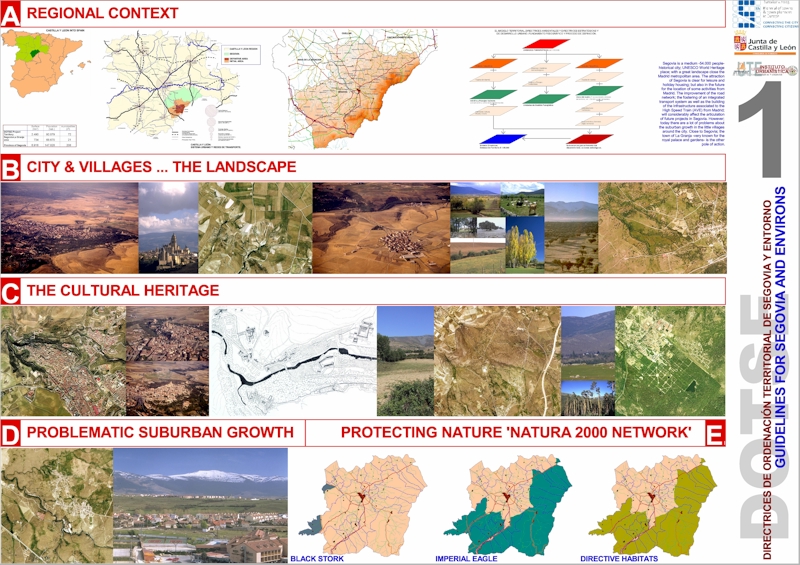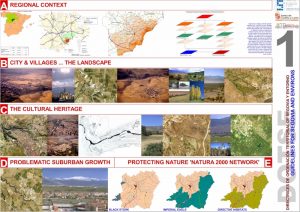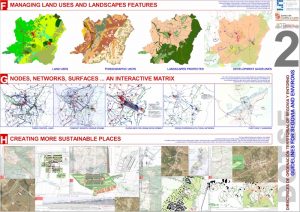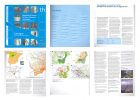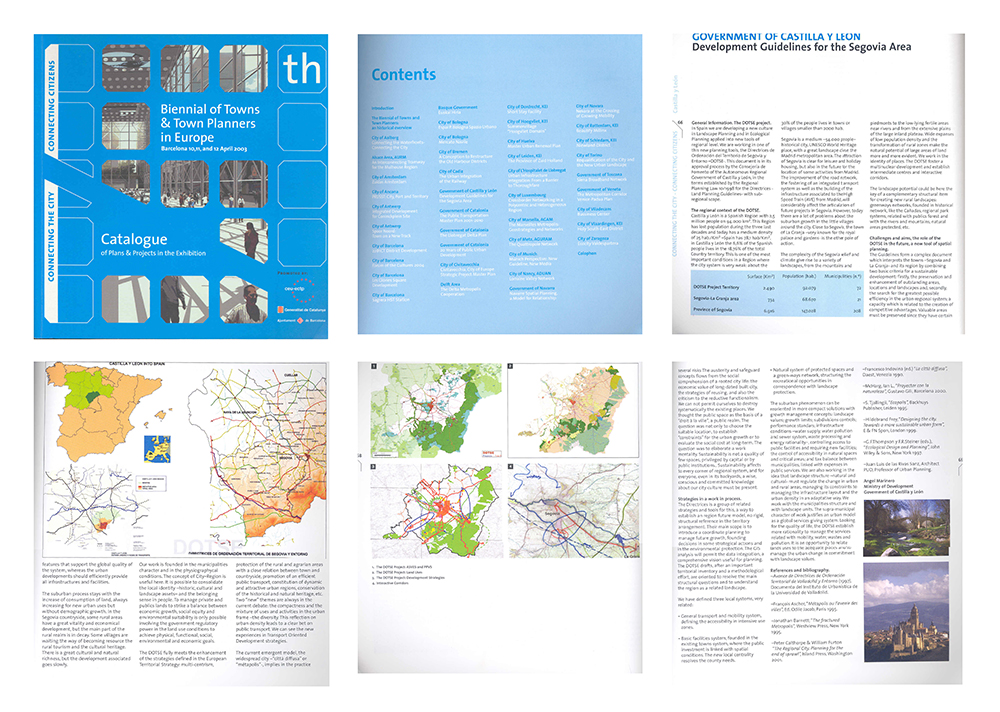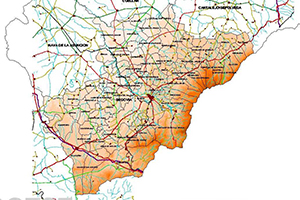Descripción
DIRECTRICES DE ORDENACIÓN TERRITORIAL DE SEGOVIA Y ENTORNO (DOTSE)
La Bienal de Ciudades y Planificadores Urbanos Europeos es un evento organizado por el Consejo Europeo de Urbanistas como una oportunidad para mostrar ejemplos destacados de actuaciones urbanas y para discutir sobre diferentes temas relacionados con las ciudades y los retos que enfrentan. La Bienal del año 2003 tuvo lugar en España, en Barcelona, con el lema “Connecting Cities, connecting Citizens”, y el documento de la Directrices de Ordenación Territorial de Segovia y Entorno (DOTSE) fue escogido para ser expuesto durante la Bienal y para su publicación en el catálogo oficial, del que transcribimos a continuación un extracto del texto explicativo:
“The Guidelines form a complex document which interprets the towns –Segovia and La Granja- and its region by combining two basic criteria for a sustainable development: firstly, the preservation and enhancement of outstanding areas, locations and landscapes and, secondly, the search for the greatest possible efficiency in the urban-regional system; a capacity which is related to the creation of competitive advantages. Valuable areas must be preserved since they have certain features that support the global quality of the system, whereas the urban developments should efficiently provide all infrastructures and facilities.
The suburban process stays with the increase of consumption of land, always increasing for new urban uses but without demographic growth. In the Segovia countryside, some rural areas have a great vitality and economical development, but the main part of the rural realm is in decay. Some villages are waiting the way of becoming resource the rural tourism and the cultural heritage. There is a great cultural and natural richness, but the development associated goes slowly.
Our work is founded in the municipalities character and in the physiographycal conditions. The concept of City–Region is useful here. It is possible to consolidate the local identity –historic, cultural and landscape assets– and the belonging sense in people. To manage private and publics lands to strike a balance between economic growth, social equity and environmental suitability is only possible involving the government regulatory power in the land use conditions to achieve physical, functional, social, environmental and economic goals.
The DOTSE fully meets the enhancement of the strategies defined in the European Territorial Strategy: multi-centrism, protection of the rural and agrarian areas with a close relation between town and countryside, promotion of an efficient public transport, constitution of dynamic and attractive urban regions, conservation of the historical and natural heritage, etc. Two “new” themes are always in the current debate: the compactness and the mixture of uses and activities in the urban frame –the diversity. This reflection on urban density leads to a clear bet on public transport. We can see the new experiences in Transport Oriented Development strategies.
The current emergent model, the widespread city –“città diffusa” or “métapolis”-, implies in the practice several risks The austerity and safeguard concepts flows from the social comprehension of a rooted city life: the economic value of long-dated built city, the strategies of reusing, and also the criticism to the reductive functionalism. We can not permit ourselves to destroy systematically the existing places. We thought the public space as the basis of a “droit à la ville”, a public realm. The question was not only to choose the suitable location, to establish “constraints” for the urban growth or to evaluate the social cost at long-term. The question was to elaborate a work mentality. Sustainability is not a quality of few spaces, privileged by capital or by public institutions.. Sustainability affects to every corner of regional system, and for everyone, even in its backyards, a wise, conscious and committed knowledge about our city culture must be present.”

